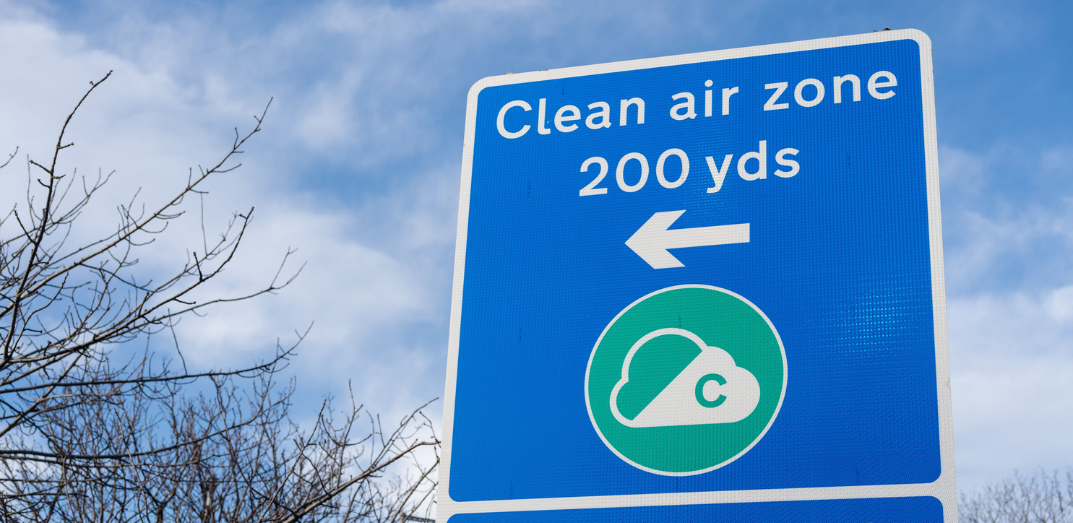Clean Air Zones
3 Minute Read

You’ve probably heard of the new CAZs (Clean Air Zones) now operating in a number of UK cities. You may even have to negotiate one.
If you’re not aware of them then chances are you soon will be.
Versions are already running in Bath, Birmingham, Bradford, Bristol, Portsmouth, Sheffield, York, Newcastle/Tyneside, and Oxford. London operates its own ULEZ (ultra-low emission zone) scheduled to be extended across the city in 2023.
Environmentally? CAZs are a great idea – who doesn’t want to live in a cleaner, kinder environment with fewer harmful emissions?
Economically? If you regularly drive a non-exempt petrol or diesel vehicle you could very well find yourself racking up significant costs.
A national and local government initiative designed to improve air quality by ensuring only the cleanest vehicles will be allowed to operate within any CAZ boundary free of charge.
Some high-emission vehicles may be banned from them altogether.
Simply enter the number plate of your vehicle into the Government CAZ checking tool.
If you’re unsure whether your vehicle complies with Euro emissions standards, then consider its age. If it was made after 2014 (2016 for vans) then you should be ok to drive for free in a CAZ.
Costs vary depending on location.
For example, the ULEZ is a Class D CAZ. Anyone driving/riding non-compliant motorcycles, mopeds, cars, vans, and minibuses will be charged £12.50 a day, except Christmas Day.
Bristol, also a Class D CAZ, charges non-compliant cars, taxis, and vans £9 per day. Trucks, buses, and coaches must pay £100.
Class D Birmingham with its 24/7, 365 policy charges £8 for non-compliant cars, vans and taxis. Non-compliant HGVs, buses and coaches must pay £50 per day.
Oxford’s 7am and 7pm Zero Emission Zone (ZEZ) is free for electric vehicles, while hybrid drivers must pay £2 per day. Petrol and diesel drivers are charged £10 a day.
Remember – if you need to know how much you’ll be charged to drive in a CAZ you can use the Government CAZ checking tool to find out. You can even make payment if necessary
Driving in London? Then use the The Transport for London portal.
The easy way to sidestep the costs of CAZ is to drive an electric or hybrid vehicle.
And while that’s much easier said than done – there’s never been a better time to do it.
Of course, you’ll have a thousand and one things to consider before you switch. The right type of vehicle for the job, the upfront, running and repair costs, insurance, waiting times and whether to buy or to lease.
But with the world transitioning to EVs, the competitive advantages, the convenience and the ability to display your green credentials all make a compelling case for change.
The most important thing to do if you are considering going electric is to make sure you get the right advice. Advice from somebody already experienced in helping charities like yours make that transition.
At Charity Fleetcare we specialise in helping all sorts of charities make the most of their vehicles. We share advice on models, leasing terms, driver certification and not least integrated Connected Van technology to make driving safer and save our clients serious amounts of money on fuel, repairs and insurance premiums.
Talk to us today – Arrange a callback